Vintagent – wither the term? It was in currency in the 1930s in British automotive publications, and as noted in the following article there were already clubs formed to promote the reputations of automobiles of certain eras as ‘vintage’ – defined in Webster’s dictionary as “adj: of old, recognized, and enduring interest, importance, or quality.” The term begs the question, what machinery qualifies? In the motorcycle world, Vintagents were late to the scene, as noted in the article reproduced below, which is the first mention of the term Vintagent as applied to motorcyclists: all credit to staff writer Dennis May.
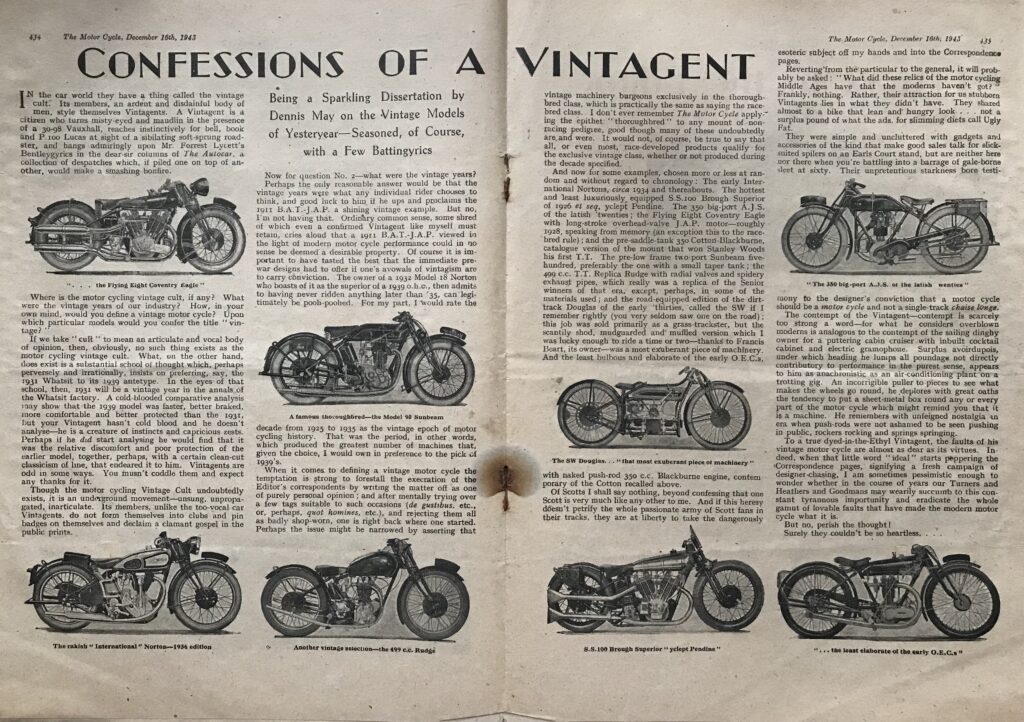
From the Dec. 16 1943 edition of The Motor Cycle – By Dennis May
In the car world they have a thing called the vintage cult. Its members, an ardent and disdainful body of men, style themselves Vintagents. A Vintagent is a citizen who turns misty-eyed and maudlin in the presence of a 30-98 Vauxhall, reaches instinctively for a bell, book, and P.100 Lucas [car headlamp – ed.] at the sight of a sibilating soft-sprung roadster, and hangs admiringly upon Mr Forrest Lycett’s Bentleygyrics in the dear-sir columns of The Autocar, a collection of despatches which, if piled one on top of another, would make a smashing bonfire.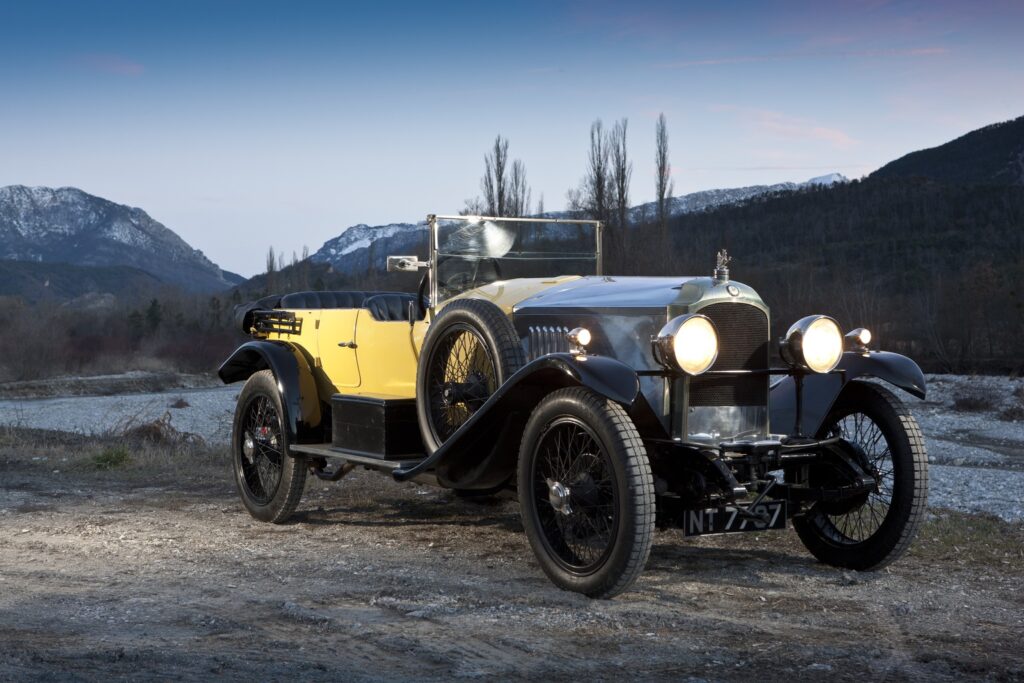
If we take ‘cult’ to mean an articulate and vocal body of opinion, then, obviously, no such thing exists as the motor cycling vintage cult. What, on the other hand, does exist is a substantial school of thought which, perhaps perversely and irrationally, insists on preferring, say, the 1931 Whatsit to its 1939 antetype. In the eyes of that school, then, 1931 will be a vintage year in the annals of the Whatsit factory. A cold-blooded comparative analysis may show that the 1939 model was faster, better braked, more comfortable and better protected than the 1931, but your Vintagent hasn’t cold blood and he doesn’t analyse – he is a creature of instincts and capricous zests. Perhaps if he did start analysing he would find that it was the relative discomfort and poor protection of the earlier model, together, perhaps, with a certain clean-cut classicism of line, that endeared it to him. Vintagents are odd in some ways. You mustn’t coddle them and expect any thanks for it.

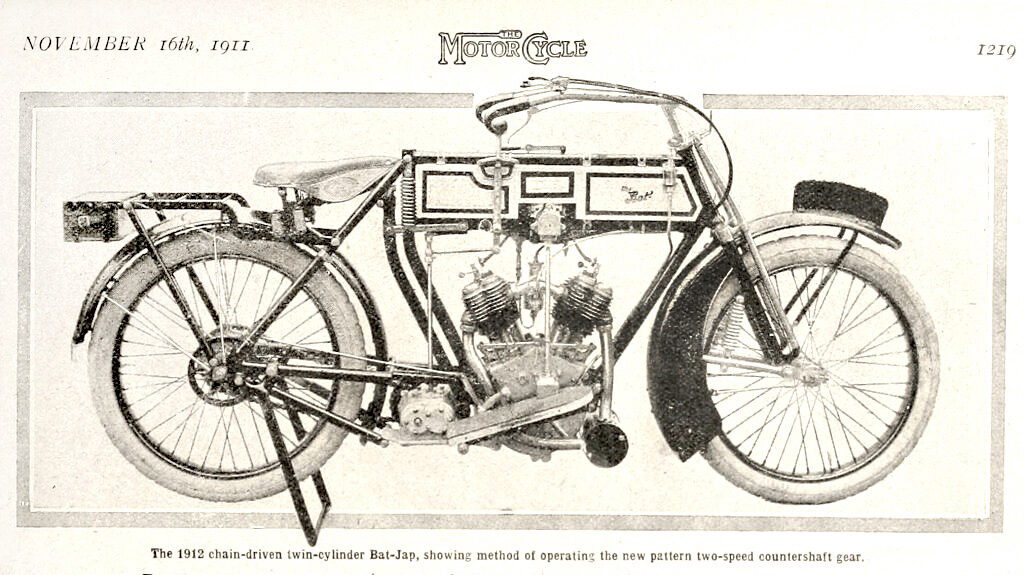
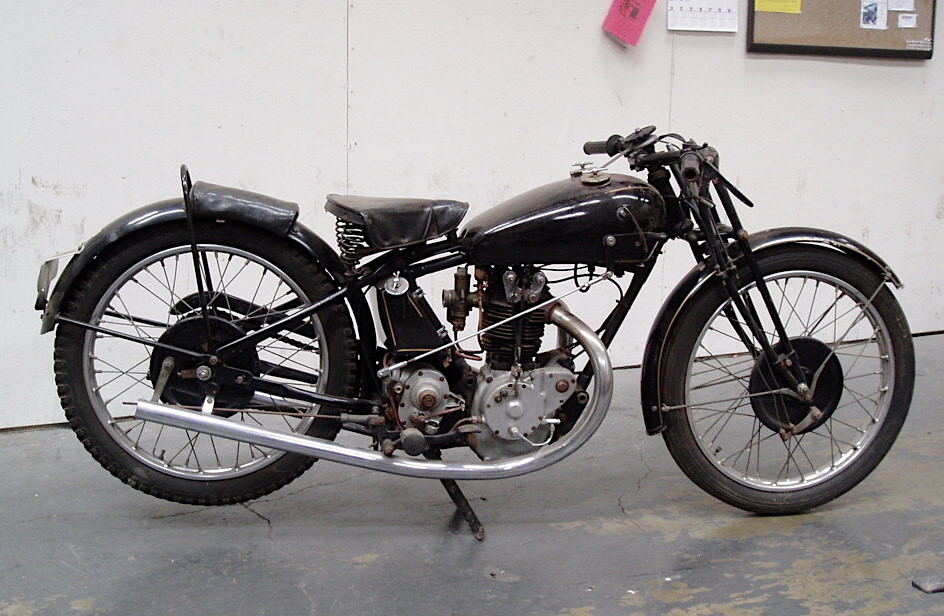
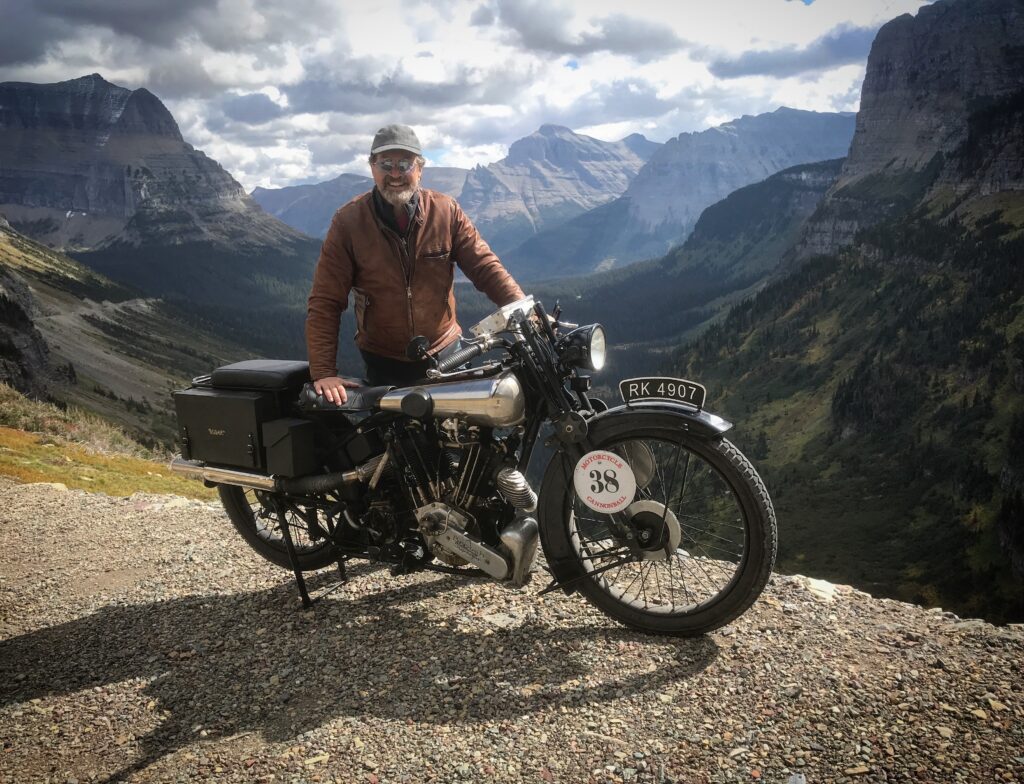
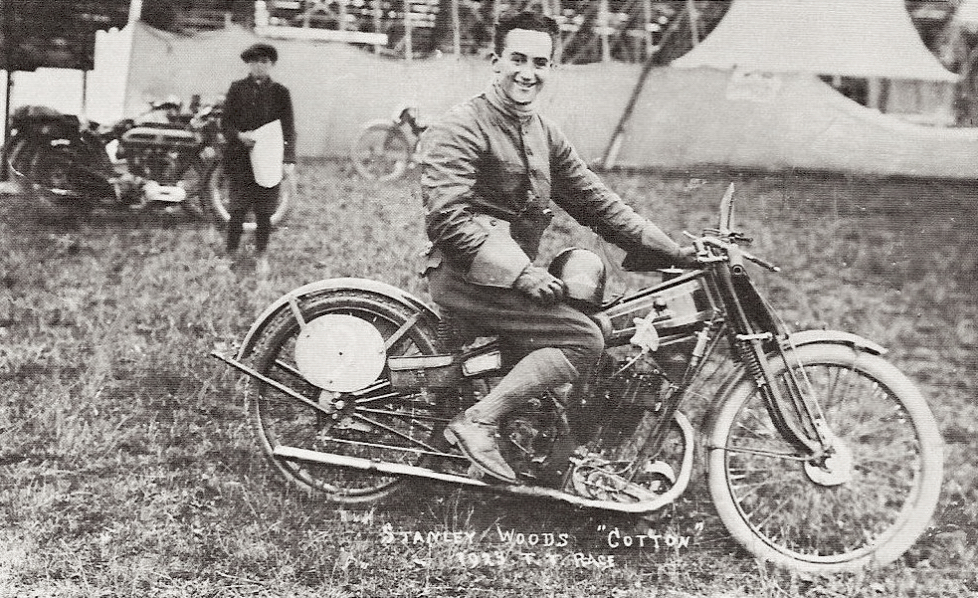
Reverting from the particular to the general, it will probably be asked: ‘What did these relics of the motor cycling Middle Ages have that the moderns haven’t got?’ Frankly, nothing. Rather, their attraction for us stubborn Vintagents lies in what they didn’t have. They shared almost to a bike that lean and hungry look…not a surplus pound of what the ads for slimming diets call Ugly Fat.
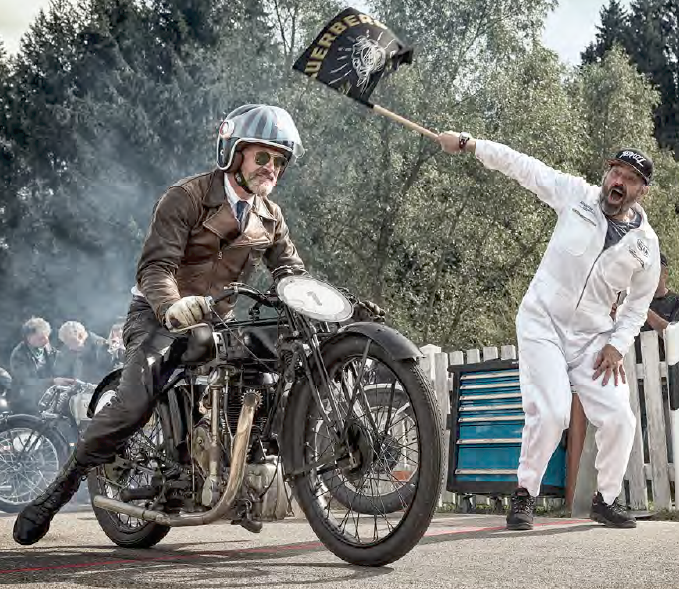
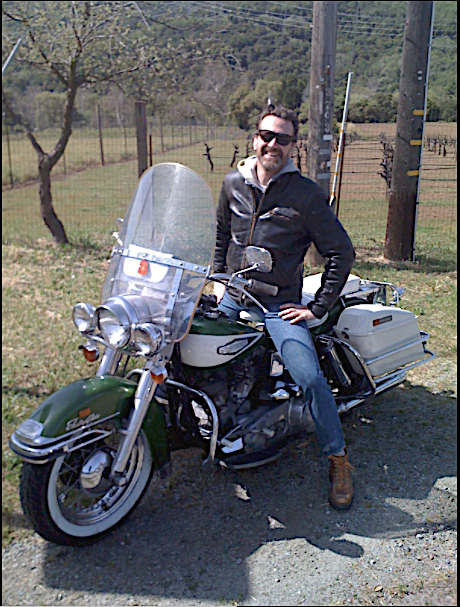
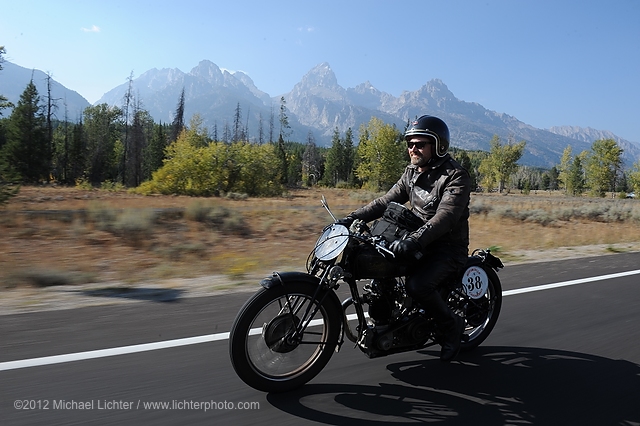
But no, perish the thought!
Surely they couldn’t be so heartless…
Dennis May

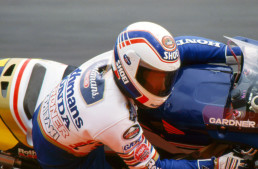

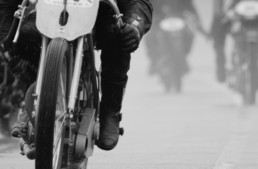
As with fine wines .. Por moi … there is no specific year … country of origin ..or era .. but rather specific bikes n’ cars that ring my Vintagent bell/gong like a ton of bricks .
For example … Crockers … Vincents ( and Egli .. Egli Godet Vincents ) Brough’s … a whole host of classic Ducs …pre 1925 H-D’s .. those incredible ‘merican inline fours of the distant past … Beemers etc .. etc .. et al